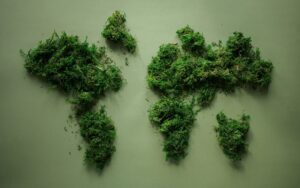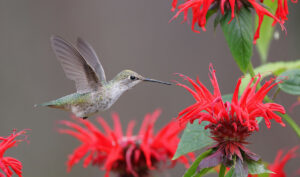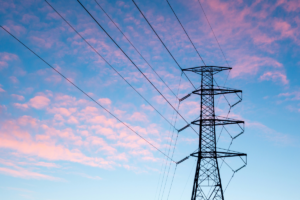One of this summer’s more unfortunate viral phenomena featured dystopian pictures of hazy orange skies with red suns in cities all over Canada and the Northeastern and central United States. For a significant part of Western and central Canada, wildfire season is an expected annual occurrence. On average, Canada has an estimated 8,000 wildfires every year. But this year, with smoke from Quebec reaching as far as the Southern United States and many high-density urban areas suddenly struggling with the worst air quality their cities have ever seen, it’s natural to wonder why exactly wildfire season is breaking records.
The first thing to understand is that wildfires, as unpredictable as they may be, have three main “ingredients”: ignition, fuel, and weather. Ignition refers to the initial cause of the wildfire. In Canada, lightning strikes ignite almost half of all wildfires. Human error (such as campfires and improperly thrown away cigarettes) is another common cause. After ignition, the type of fuel surrounding the fire determines how intense it will be and how far it will spread. Wildfire fuel is often dry grass and trees. The drier it is, the quicker it is consumed, creating a more out-of-control fire. Once a fire is burning, wind and rain can change its path – for better or worse.
Where climate change comes into play
It’s no secret that the effects of climate change will continue to drive extreme weather events of all types, increasing both their frequencies and intensities. Wildfires are no exception. On the surface, it’s easy to see how a continually warming planet means drier fuel and greater potential for fires. This year, hotter-than-usual temperatures and drought conditions in many provinces led to wildfires in unexpected (and often unprepared) regions, like the usually mild and humid Atlantic provinces. More severe storms will lead to an increase in lightning strikes and a greater number of ignitions.
But even “far-away” consequences of global warming can and will continue to affect wildfires. The earlier melting of snowpacks in the spring leads to less water availability in increasingly hotter summers – a quirk of the water cycle that would otherwise help regulate wildfire season. And shifting wind patterns, as a result of warming, are liable to both worsen the spread of fires and bring extremely harmful smoke to new areas and greater populations.
We tend to observe natural disasters with a fairly distanced lens and the mindset that it happens “somewhere else”, to “someone else”. Wildfires used to be perceived as a “West Coast thing”. Now that they’re no longer just a West Coast phenomenon, they seem to have brought a greater sense of urgency and understanding about the Earth’s rapidly changing climate conditions.
Wildfire smoke’s far-reaching effects
Air quality index (AQI) reports are regularly available on the basis of usual air pollutants, and they come in a range of severity. But during wildfire season, they often more pointedly report readings or forecasts of PM2.5, a type of fine particulate matter that’s found in large quantities in wildfire smoke. On days when the smoke causes a slight haze, weather alerts describe the air quality as “acceptable” or “moderate”. These warnings often describe a significant risk only to young children, the elderly, or those with pre-existing respiratory conditions.
But on and around June 30th, 2023, AQIs in New York City, Toronto, and Montreal were all so high they were amongst the top 5 cities with the most hazardous air in the world. At this level, amounts of PM2.5 are significant enough to pose a risk to everyone, regardless of age or health condition – and the effects are quick. These extremely fine particles can make their way into the lungs and bloodstream, causing headaches, irritation in the eyes and throat, coughing, and a runny nose (and this is only on the milder and immediate end).
The ‘buzz’ surrounding climate change
Despite all this, it’s surprising (or not, depending on your own level of cynicism) that the shock of this year’s wildfire season still hasn’t fully eliminated dismissive attitudes towards such an important issue. Take, for example, Ontario Premier Doug Ford. He declined to acknowledge the role climate change played in making this year’s wildfire season eminently worse, and later went on to accuse the opposition of making the situation political.
One problem is that climate misinformation runs rampant. An unfortunately all-too-common refrain is that global warming cannot possibly be causing colder winters and increasingly severe floods. Climate and weather are, of course, incredibly complex. There is a plethora of scientific evidence–decades’ worth–on its causes, effects, and potential consequences. But there’s still work to be done on how this information is disseminated in a simple yet thorough manner.
The pictures, videos, and health effects from this summer paint a dire picture. But one result of it all appears to have been a renewed effort in having vital conversations surrounding climate change. We can only hope the push towards environmental awareness continues to gain steam, because as it stands, so will wildfire season.
Check out:












Be First to Comment